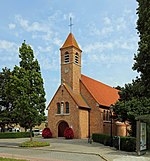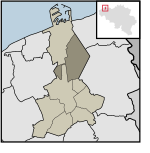Zeebrugge
Geography of BrugesPages with Dutch IPAPopulated places in West FlandersPort cities and towns in BelgiumPort cities and towns of the North Sea ... and 1 more
Zeebrugge

Zeebrugge (Dutch pronunciation: [zeːˈbrʏɣə]; from Brugge aan zee [ˌbrʏɣə ʔaːn ˈzeː], meaning "Bruges-on-Sea"; French: Zeebruges) is a village on the coast of Belgium and a subdivision of Bruges, for which it is the modern port. Zeebrugge serves as both the international port of Bruges-Zeebrugge and a seafront resort with hotels, cafés, a marina and a beach.
Excerpt from the Wikipedia article Zeebrugge (License: CC BY-SA 3.0, Authors, Images).Zeebrugge
Heiststraat, Bruges
Geographical coordinates (GPS) Address Nearby Places Show on map
Geographical coordinates (GPS)
| Latitude | Longitude |
|---|---|
| N 51.330833333333 ° | E 3.2075 ° |
Address
Heiststraat 76
8380 Bruges
West Flanders, Belgium
Open on Google Maps










